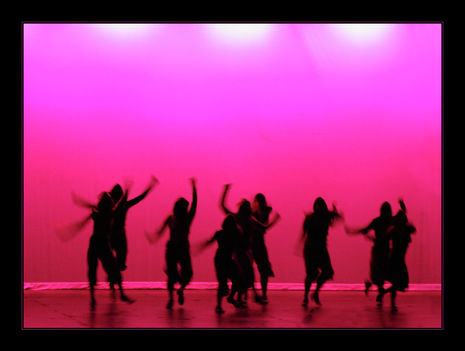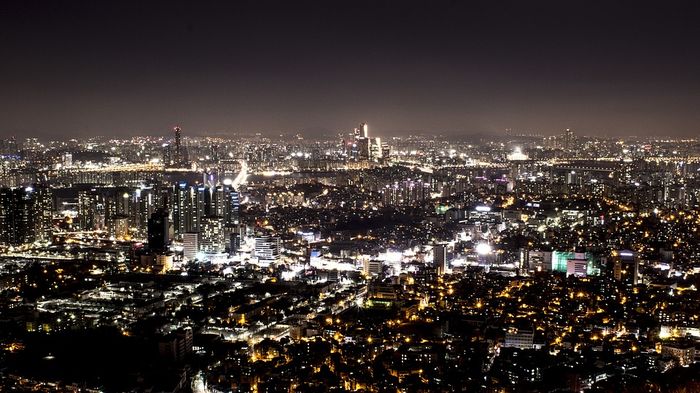Did you hear that correctly?: Rhythm and movement
Columnist Juliet Firth explores the role of the heart to the rhythm of life and our innate pull towards dance in her series on the science of music

Picture this: a jazz band made up of sax, guitar, keys, double bass and drums, shuffling through the soul and blues charts. I sat watching this performance enshrouded in a rather elderly audience, sombre-eyed and poised. And yet, after 10 minutes of music (or rather, when the alcohol began to kick in) four couples had made their way to the side and began dancing. Swaying, toe-tapping, twirling. I felt like I was watching a cliché movie scene. And yet, this really was happening. The rest of the audience had also visibly loosened up, clapping along. What sort of magical effect was occurring? What inspired such a transformation in mood and why were people dancing? Studies suggest that from birth, humans are predisposed to move to a rhythm or beat and that dancing comes naturally to young children. It has also been found that it is predominantly the rhythm of a song or piece that encourages this physical response. But why?
'The beat felt at the core of the music that we listen to daily seems strangely in alliance to the rhythm of our own hearts'
Place your hand on your chest. Can you feel it? Our heart rates range from 60 to 100 beats per minute (bpm) when resting, almost doubling this when active. Now think of your favourite song or piece. Whether it’s ‘Poker Face’ by Lady Gaga, ‘Dreams’ by Fleetwood Mac or ‘Don’t You Worry ‘Bout a Thing’ by Stevie Wonder, there remains one common feature, especially between these three songs: the tempo. The beat felt at the core of the music that we listen to daily seems strangely in alliance to the rhythm of our own hearts. After all, both are measured in beats per minute and normally range between 50 and 200 bpm. During foetal development, the heartbeat of the mother is arguably the most prominent sound that the growing baby is exposed to. Naturally, the mother’s heart rate will accelerate and decelerate depending on what the mother is experiencing in her life, whether that be a shock or something more passive such as listening to music. It has been found that from around 20 weeks of pregnancy, the baby’s heartrate will also accelerate and decelerate in response to audible cues. There is something very physical about this. It seems that the change in sound and our response to this has a similar effect on our bodies as active change, such as walking, running and even dancing.
Physiologically, it seems that movement and sound are intertwined. Music stimulates the cerebellum, which is the part of the brain that dictates movement and coordination. Similarly, the vestibular system (the sensory system in control of balance and movement) lies in the inner ear, directly connected to the auditory system. Growing babies rely on their auditory system to make sense of the world around them and move accordingly. But, the most rhythmic aspect of the human body is arguably the heart, with its own built-in pacemaker (the sinus node), making it metronomic in its (usually) steady pulsations. The tempo of the heart therefore becomes the tempo of life, thus the tempo that reflects all movement.
'Moving in sync with others creates a highly beneficial social bond'
Why is it true that all musical cultures are linked to dance? To make any musical sound requires, arguably, some form of movement, whether that be hitting a drum or pulling a bow across a string of a violin. If we consider dancing an inherently automatic response to rhythm, it is interesting that what might seem simply reactionary also aids us socially. Moving in sync with others creates a highly beneficial social bond. This bond is necessary in the formation of tribes, so that humans might thrive as a community, as well as utilising ‘dancing’ as a weapon against predators. The ‘haka’, for example, performed by the New Zealand rugby team, increases adrenalin and unites the group in solidarity against the opposition. It is a Māori tribal tradition that involves the use of strong rhythms, emphasised by body percussion, stamping and chanting, traditionally as a preparation for battle. While this tradition seems separate to music altogether, there is no denying the rhythmic importance for the coordination of movement that allows this tradition to have such a resounding impact, not only within the group but also on the observers.
'Our ability to make shapes with our bodies in reaction to musical and especially rhythmic stimuli is a global phenomenon that has excited our world for generations'
Learning to emphasise movement to suit the music that we are dancing to is a perfected art, but simply moving to music and rhythm, no matter how sporadically, is in itself beneficial for our social, physical and mental states. In a relatively recent study into alleviants for Parkinson’s disease, Irish dancing was proclaimed a form of short-term therapy for patients. It remains unknown as to whether it is the strong rhythms of the style or rather the shifting in balance necessary in performance that somehow overcomes aspects of the disease. Nevertheless, this finding emphasises how movement in time with a rhythm or pulse can be so consuming and ingrained in our being, as one of the most feel-good inducing things we are capable of.
Our ability to make shapes with our bodies in reaction to musical and especially rhythmic stimuli is a global phenomenon that has excited our world for generations. It is a unanimously powerful force that allows us to bond socially, improve our wellbeing and, like most art forms, express ourselves (but more on expression next time). It seems the rhythm of life really is a powerful thing.
 News / CUP announces funding scheme for under-represented academics19 December 2025
News / CUP announces funding scheme for under-represented academics19 December 2025 News / Cambridge welcomes UK rejoining the Erasmus scheme20 December 2025
News / Cambridge welcomes UK rejoining the Erasmus scheme20 December 2025 Comment / Yes, I’m brown – but I have more important things to say22 December 2025
Comment / Yes, I’m brown – but I have more important things to say22 December 2025 News / SU reluctantly registers controversial women’s soc18 December 2025
News / SU reluctantly registers controversial women’s soc18 December 2025 Film & TV / Timothée Chalamet and the era-fication of film marketing21 December 2025
Film & TV / Timothée Chalamet and the era-fication of film marketing21 December 2025









